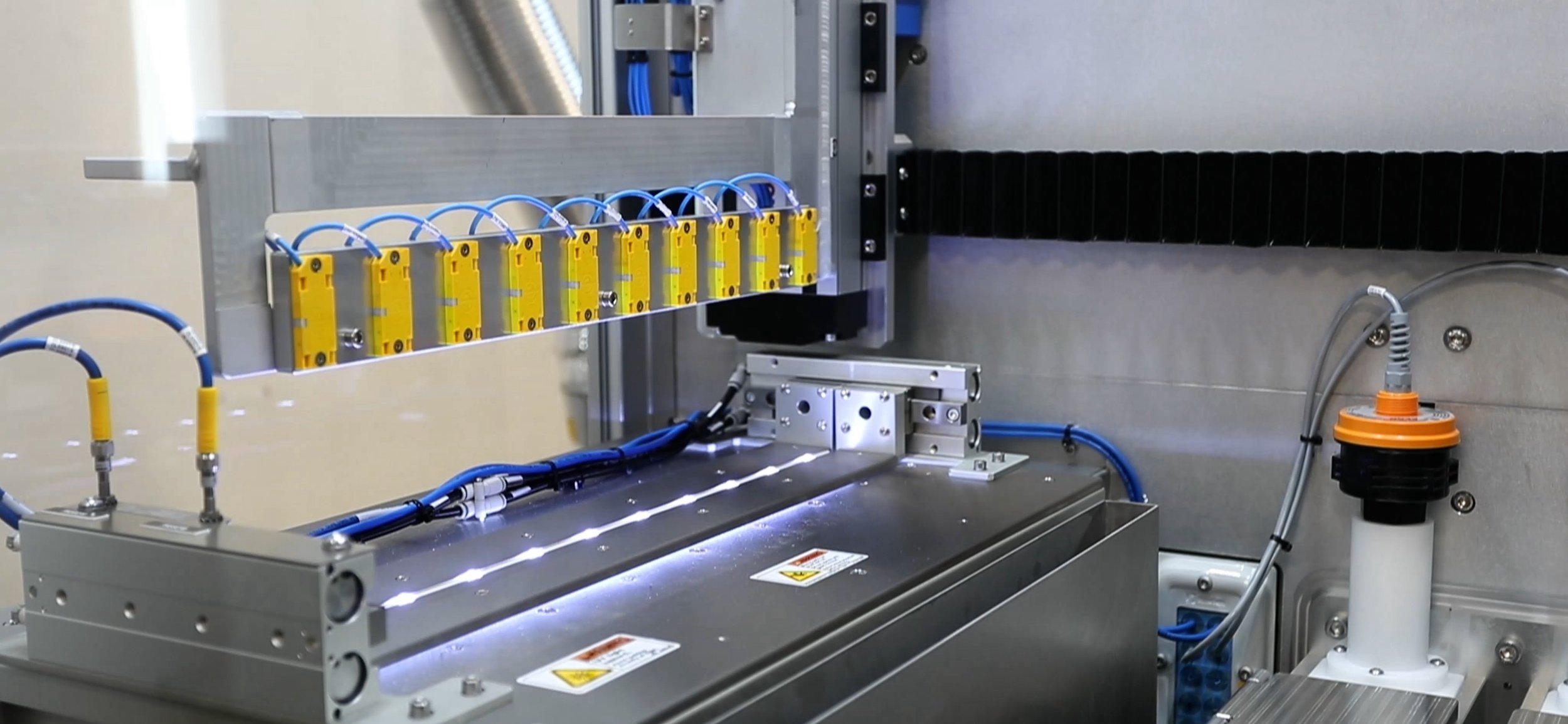Automation for Explosion-Proof Environments
It is a challenge to design automation that can meet tough environmental standards like Class I, Division 2 for situations where flammable gases, vapors, or liquids may be present.
Arimation has experience in designing and integrating automation that meets these standards, which requires specialized components, protective enclosures, and strict knowledge of and adherence to regulatory certifications.
CASE STUDY: Universal Dip Coating (UCM) in Class I, Division 2 Environment
CHALLENGE
A global healthcare equipment provider needed to increase throughput to keep up with increasing demand for its catheters and guide wires while ensuring high quality. To solve this problem, Arimation was asked to provide an explosion proof solution that could consistently coat medical devices.
The dipping speed, depth, and process involved in medical device coating applications required adjustable recipe control to accommodate varying products. It was also critical that the Ultraviolet (UV) dose delivered to the product was closed loop controlled to consistently deliver the correct amount of Joules, even if the conditions changed over time.
Since the cured coating is invisible to the naked eye, product traceability, monitoring, and diagnostics were required. The coating materials and process also involved flammables, which led to a requirement to be Class I, Division 2 rated.
SOLUTION
Arimation designed a Universal Coating Machine (UCM) that could consistently apply coating to catheters and guide wires. As the client Senior R&D Engineer described, “We had a lot of room for optimization of this process. Arimation offered subject matter expertise and had a suite of ideas to bring forward.”
The final solution is capable of coating 10 products at a time and its recipe-controlled process accommodates various product types with primer and final coating solutions. As well, capacitive sensors detect each individual product to ensure they were coated, flagging products that need operator attention.
The system was designed for traceability throughout the process, which includes the following steps:
coating solution filling process,
solution life monitoring,
continuous coating solutions level monitoring that automatically adjusts the dipping depth to consumed solutions, and
close-loop controlled UV dosing system that measured the Joules delivered to the product.
Given the high potential of flammable liquids, a Class I, Division 2 rating in the processing area was a must. To meet this challenging requirement, the design guaranteed laminar air travel from the bottom to the top of the machine to exhaust any potential fumes out of the machine process area. In addition, the main electrical enclosure was purged with air to keep any potential fumes out using the Pepperl+Fuchs purge unit. Finally, intrinsically safe sensors and safety barriers were used along with the Bosch explosion proof servos to make sure no device could initiate a spark.
Built in diagnostics were applied to not only guarantee a consistent process, but also to monitor the Lower Explosive Level (LEL), electrical enclosure purging, air flow presence, and the UV-lamp cooling.
Designed with ease of maintenance, accessibility, and cleaning in mind, the solution includes full height doors for direct access to key components and allows for technicians to easily remove them to perform maintenance.
RESULT
The UCM solution was successful in delivering the higher throughput and quality the healthcare equipment manufacturer expected. The client R&D Engineer assigned to the project also shared that, “This equipment is going to make a big impact on our manufacturing line because it is easier to use and implement.”
This solution is now available as a build to print option for medical device manufacturers that produce less invasive surgery solutions to coat their products with confidence and in compliance.

